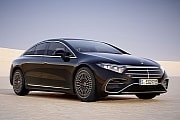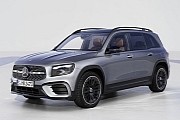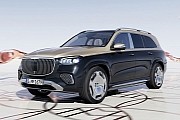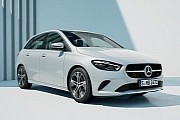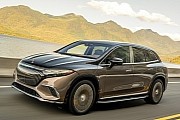history
The German luxury car-manufacturer has been around for more than a century, having elegantly drifted the both smooth and rough curves of automobile history. Responsible for the modern internal combustion engine's genesis, the 'fathers' of the Mercedes-Benz brand practically invented the automobile.
Many years ago when mahogany canes and high-top hats were the ultimate fashion and social prominence statements, two men by the names of Karl Benz and Gottlieb Daimler were busy freeing the world from horse-powered transportation. The 1886 archetype of the modern engine, their device was not a result of team-work but of independent and synchronous research and development. Although both lived in Southern Germany, they never actually met if historical accounts are to be believed.
Despite the equal share of the two engineer's contribution to the development of the four-stroke petrol engine, it was Gottlieb Daimler who garnered more attention that would eventually lead to world-spread fame. Following Daimler's successful results in racing, a wealthy Austrian business man by the name of Emil Jellinek became interested in the Unterturkheim-built cars. Daimler and his chief-engineer, Wilhelm Maybach's work had pleased Jellinek to the extent of him approaching the two with a business proposal: a large number of cars would be ordered in exchange to a name change from Daimler to Mercedes – Jellinek daughter's name - and the right to alter the car's designs as well as the right to resell the vehicles in some European countries, including Austria, France and Belgium.
Well before the WWI outbreak, Gotllieb Daimler had gained a reputation for his vehicles that was greater than that of Benz. However, the latter would strive to keep up, managing to stay close to Daimler's tail. In 1908, both manufacturers shared the podium with winnings in the French Grand Prix.
After having converted their factories to cater for Army demands during WWI, the two rivals were brought together by a a series of circumstances, dictated by precarious economic status and impossibility of self-support. Thus, the Daimler's Motorengesellshaft merged with Benz & Cie in 1926, morphing into the larger Daimler – Benz AG.
Ever since, Mercedes-Benz cars have been some of the best cars in the world, standing as symbols of flawless quality and cutting edge engineering. In fact, the men behind the brand are responsible for the development of countless improvements that cover every inch of a car's anatomy.
Despite having been widely criticized for alleged forced employment and violation of human rights during the Second World War, Mercedes – Benz have been successful at building an automotive empire, strongly supported by some of the company's far-from-average clients, such as state leaders, media moguls and ridiculously rich families.
Mercedes – Benz have become known particularly for their limousines, most of which can be seen in most movies ever since the Lumiere brothers became famous for their 'little' invention called cinematography. As if outstanding product quality and world fame weren't enough, the Mercedes – Benz team has also fathered tons of innovations, many of them targeting the simple four-cylinder engine.
28 years after Otto revealed his prototype of a four-stroke gasoline engine, Wilhelm Maybach perfected his idea and built an engine for Daimler to be used in boats only. Development of the engine that would eventually propel land, water and air vehicles fulfilling Daimler's dream, took some 8 years before being fitted on the Daimler Phoenix model, the first vehicle in the world to be equipped with such an engine.
Meanwhile, Karl Benz was busy working on a four-cylinder horizontally-opposed piston engine as an improvement of his 1897 contra-design. 1900saw the release of the improved contra-engine and completion of Benz's work at the time. Some of the advantages the horizontal design had over its in-line counterpart were room and dynamics related. The opposed horizontal placement and firing order of the pistons meant very few vibrations, a lower center of gravity as well as more space for fitting other devices like turbo or superchargers.
The early 1900's brought forth a second series of engineering innovations with Maybach's development of the “hammer” engine-design for Daimler that earned its name thanks to its dual-camshaft controlled lateral intake and exhaust valves; Daimler also came up with the Simplex in 1902, a racing car powered by an in-line four cylinder engine that featured overhead intake valves and rod-driven exhaust valves. To ensure low working temperatures, the Simplex design also boasted double walled cylinders to accommodate an even cooling water flow as close as possible to the heat source.
The origins of hybrid vehicles are not as recent as one may think. In fact, they can be traced as far back as the 1900's, when the Mercedes Mixte range was released. These cars used 45 or 70 hp engines to power electrical generators. A special device, or 'hub', was then used to convert the obtained electrical energy into drive power. Built by DMG (Daimler Mottorengesellshaft), the vehicles were quite a hit at the time having won races such as the Exelberg.
Mercedes-Benz is also guilty of breaking a number of speed records, among which ramming the 200 km/h barrier is probably the mots notable. The idea of a vehicle that could reach such a speed as early as 1909 seems far fetched today but Benz's Lightning stands proof. Such a performance could only be achieved by displacement growth at the time and despite its lean-sounding name, the Lightning was a monster powered by a 21.5 liter engine.
After several other improvements like the introduction of 3-valve dual-ignition and 4-valve engines, DMG would set foot in the turbocharger era. The company's early involvement in aero-engine construction paid of in 1921 when an engine based on WWI aero-designs was developed by Paul Daimler.
As far as diesel trucks go, Benz did it first. The OB 2 diesel engine was revealed in 1923 and 1924 saw the release of the world's first diesel truck. Soon after Daimler and Benz joined hands in a profitable twirl of brilliant inventions, the 260 D model would premier in 1936: it was the world's first diesel-run passenger car. As expected, several improvements on the 260 D would follow. However, the German manufacturer's quests for leaner diesel engines would soon be hampered by the WWII outbreak.
After taking a forced and most unwelcome break from passenger-car making and engine research during the war, Mercedes – Benz resumed their activities, releasing the 170 V model in 1946. Based on the 260 D, the 4-cylinder 1.7 engine it was equipped with predated the release of the 170 D in 1949, a car that reignited customer's interest in the brand while ensuring the company's comeback.
During the 50's, Mercedes – Benz produced some of their best looking cars ever such as the 190 and 300 SL. The first was a compact roadster that garnered acclaim after setting a new world diesel record in 1959. The latter is none other then the famous gull-winged model that is apparently making a comeback through the SLC model that is still to be revealed. Besides its stunning looks, the 300 SL was the first production vehicle to benefit from early fuel-injection technology.
By the time the 80's came, the world had already grown concerned with the effects of CO2 emissions and overall car pollution. Mercedes – Benz were among the first to comply with regulations through the introduction of the closed-loop three-way catalytic converter in 1985. With this and several oil-filter changes, like easy from-above access, Mercedes – Benz vehicles went further to become even more advanced.
By the early 1990's, their diesel car range had completely switched to four-valve intake/exhaust systems and carburetors were dropped in favor of fuel injection systems. A few years later, Mercedes – Benz moved into developing superchargers which it did through the release of the C 230 Kompressor.
After marking a new era in mechanical supercharging technology, Mercedes went on to cross new borders through the release of new engineering concepts and ground breaking designs. The BlueTec system unveiled in 2005 was developed with only one though in mind: cutting CO2 emissions, achievement made possible through the use of SCR (Selective Catalytic Reduction). Two other notable events occurred the same year with the release of the A 200 Turbo engine for the A-Klasse and the organic-looking Bionic concept.
Mercedes – Benz was the first to fit ABS and ESP systems on its cars and lately it has truly crossed the line with the DiesOtto engine which premiered at the 2004 Frankurt Moto Show. The DiesOtto boasts variable combustion chambers while delivering the advantages of both gasoline and diesel drives. Its CAI (Controlled Auto Ignition) allows the spark plugs to stop firing at higher temperatures when fuel, gasoline in this case, can be ignited the same way diesel can. The route researchers have taken to achieve variable combustion chambers remains unveiled yet although it is sure to be made public in a few years from now when the DiesOtto is likely to start replacing regular engines.
expand








